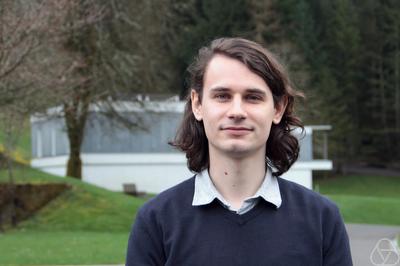Weierstrass Lecture 2022

(Picture archive of the Mathematical Research Institute Oberwolfach)
The Weierstrass Lecture 2022 with the title "Analytical Geometry" will take place on 24 June at 16:00 in the Auditorium maximum (Audimax). We were able to win Prof Dr Peter Scholze (Bonn) for the Weierstrass lecture. Prof Scholze was awarded the Fields Medal in 2018, the "Nobel Prize of Mathematicians".
Historical Lecture
The historical lecture entitled In higher spheres will be given by Prof Dr Klaus Volkert (Wuppertal).
Abstract
In the second half of the 19th century, mathematics advanced into higher spheres - the processing of more than three-dimensional spaces began: first cautiously and accompanied by clear reservations, then more courageously and finally as a normal case that no longer required commentary. A milestone in this process was the result, proven by several mathematicians shortly after 1880, that there are six regular solids in four-dimensional space, analogous to the five Platonic solids in three dimensions, and only three in higher dimensions - an astonishing fact, comparable to an example explained by Karl Weierstrass to the Berlin Academy in 1872, who found a continuous function that was not differentiable at any point, a true monster. Mathematics began to take an interest in exceptions and monsters.
On this path to higher things, which we will trace in the lecture, mathematics gained unusual popularity: the fourth dimension served to explain strange phenomena such as the disappearance of an object from a closed container and as a metaphor for new freedoms and elevated morality. The visual arts also discovered the unexpected possibilities offered by the fourth dimension. Just as the slogan "Everything is relative" later became a much-used, badly trivialised slogan for the theory of relativity, the fourth dimension became the talk of the town in the 1880s. This posed an unusual challenge for mathematics, which liked to call itself (and still calls itself) pure.
